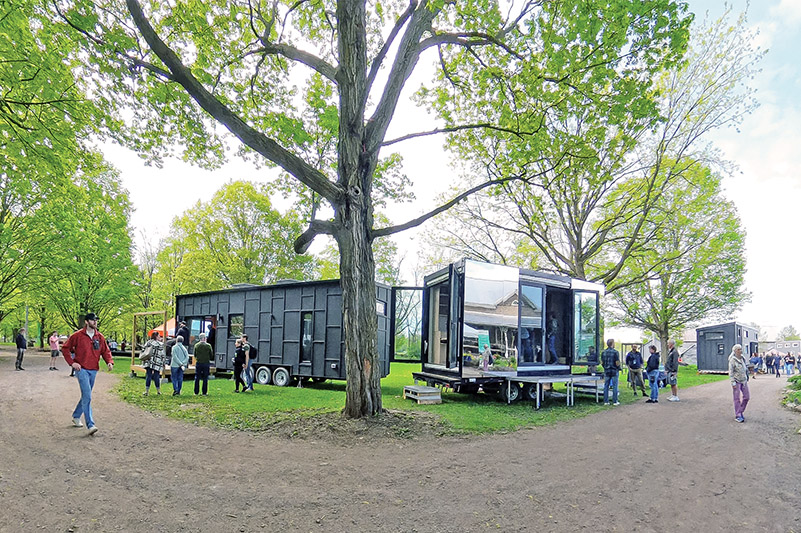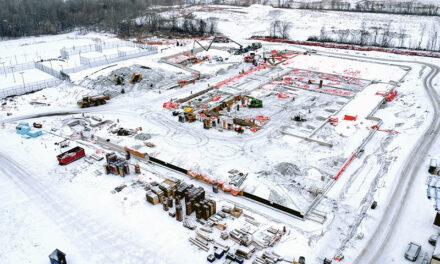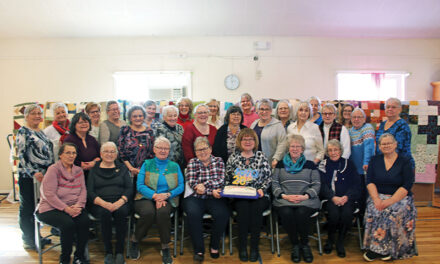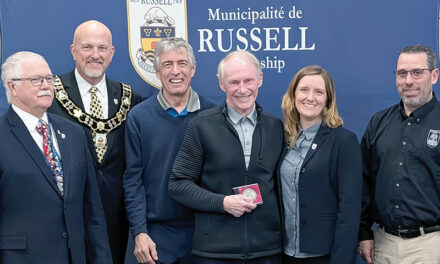Stanley’s Olde Maple Lane Farm in Edwards was the site of the Ottawa Tiny House Show. There were six different types of tiny house on display as well as merchants and service providers who specialize in the tiny house lifestyle. Tinkess Photo
EDWARDS – Anyone who hasn’t been living in a cave for the past five years should be well-aware of the prohibitively high cost of housing. For many, the dream of home ownership is far out of reach, and even the cost of rental housing is enough to stretch most budgets to the point of breaking, and beyond.
If there is a positive to come out of this situation, it is that many people have had to take a good, close look at what they need versus what they want, or what society has told them they should aspire to possess. Many have come to the realization that they can survive quite comfortably with far less than they would have thought. It is that paradigm shift that has led to the idea of what is commonly referred to as a “tiny house.”
Last weekend, Stanley’s Olde Maple Lane Farm was the site of the Ottawa Tiny House Show. The event, which ran from Fri., May 10 until Sun., May 12 not only provided an opportunity to step into actual tiny houses (there were six), but also provided an opportunity to learn how to make this lifestyle choice a reality if you have been considering ways to get a grip on the high cost of living. In addition to being able to step into the actual product, there were several companies on site that cater to tiny house living as well as a strong educational component with a series of speakers whose expertise might make such a change seem less daunting.
Bianca Metz is the co-producer of the show and owner of The Giving Tree Consultancy, a company that has been helping clients live tiny for years. Each day of the show Metz started things off with a comprehensive review and touched on all the basics, things like certifications, bylaws, and much more.
Nothing gives an influencer like Metz more credibility than when they fully buy into the idea themselves, and that certainly is the case with Metz. She and her family have embraced the tiny, minimalist lifestyle, living in a tiny house in Dundas, Ontario, and are loving the positive change it has brought into their lives.
“We love it,” said Metz. “It’s been five years for my husband and I and our six-year-old so it’s the best life. We went from spending $4,000 plus a month with nothing left in the bank account at the end of the day, to living with financial freedom. We pay nothing; we bought our house outright and we have no bills. It’s great!
Metz says that a lot of things happened in a very short timeframe which helped the tiny house movement gain momentum. Not too long ago you would not have expected much support from the government for something that is so different from traditional housing. Has that changed?
“Rapidly, so rapidly,” says Metz. “Over the last two years, we now have a building code that has now accommodated for much smaller dwellings with minimum size units. 188 square feet is now the dwelling minimum across Ontario, and municipalities have to defer to that. If they don’t, then you can have a sizing variance, but most municipalities have eliminated what’s called the minimum size requirement for both principal and secondary dwellings, which then differs to 188 square feet. So that really helps us be able to build tiny homes and have them move forward.
“Also, builders getting supply and units into Ontario was really difficult because not even three years ago, you could only have what’s called a CSA certified tiny home, there’s two different certifications. It’s the A 277, and then the Z 240.2.1. I realised that’s a lot of letters and numbers, but these were the only two manufactured homes that were allowed in the municipalities, but there are very few builders who build those and even less in Ontario. It’s very expensive to attain those certifications. So now, builders can build what’s called the two-stage certification process or dual stage certification process.”
What that means is the builder will have the tiny house built off site in the municipality they’re building in. For example, if they’re building in North Dundas, North Dundas would inspect that unit as it’s being built. Then, if that unit was going to North Frontenac or somewhere else, then that building department would inspect and certify and issue the building permit when it gets on site. “That completely eliminated this need for having these really expensive certification standards,” added Metz. And now building code is being implemented for small spaces, for accommodating stairs and lofts. “It’s all really exciting.”
It’s easy to see why Metz is the first speaker each day. Her passion for the topic of tiny homes is obvious. And contagious.
After that warm-up, attendees could choose the talks they want to attend. Throughout the three-days of the show you could learn about planning your tiny home budget and financials, discover the economic reality of living off-grid, how to rent your tiny home as an Air BNB (since you won’t be pouring all your income into a mortgage and might choose to do a bit of travelling), and how to turn your new shelter into your home.
One thing the show illustrates is that there are as many different tiny home choices as there are people to make them. Some people might be looking at adding a separate, stand-alone living space for a parent who wants to move closer without giving up all their privacy and freedom. Others might be looking at how to add a revenue stream to their property without having to bring strangers into their personal space. Others might see the tiny home as a realistic way to get into home ownership in a way that makes financial sense. Yet another group might want to just be able to get away from everything from time-to-time without making it a permanent change. The possibilities are almost endless.
One other thing the show illustrates is that it is difficult to put a “ballpark figure” on the cost of a tiny house as there are just so many different sizes, designs, and uses. Safe to say though, that if you are paying only for space you need, it is going to be much less than a traditional, much larger site-built home.
A major hurdle not so long ago was the unwillingness of municipalities to see how they could make tiny homes work within the parameters of the Ontario Building Code. Some, communities have a philosophy of “finding a way to yes,” while others prefer to treat it as a black and white issue, if it doesn’t specifically say you can, then you can’t. As the song says though, the times, they are a changing. To alleviate the current and projected housing shortage, the province has made some changes, and is expected to make more that will make it easier to fit tiny homes into the mix, not by lowering standards, but by modifying expectations, in essence reversing the trend from bigger, shinier, more expensive, to something closer to what most people need. After World War Two, the “Strawberry Box” standard was closer to 1,000 square feet than the 1,520 sq. ft. median size of a single-family residence in Ontario.
We keep hearing that Ontario has a housing crisis, that there aren’t enough rental units, that young people cannot afford to get in the housing market and that there aren’t enough good ways for the elderly to age in place, and there aren’t enough long-term care spaces to accommodate them. Tiny homes may not be a perfect solution for everyone, but it does seem like they offer something valuable: a way for more people to be able to have a place to call home.

Terry Tinkess is a professional photographer, educator and journalist. He has been making a living with a camera and keyboard since 1999 and has been featured in such publications as The Ottawa Citizen, Cornwall Standard Freeholder, The Globe and Mail, The Miami Herald, Ottawa Construction News, The Ontario Construction Report, Ontario Home Builder Magazine, Reed Construction Data, Canadian Potato Business and most recently, The Record and Eastern Ontario AgriNews. Terry lives in Ingleside, Ontario with his wife Brenda, Mia the anxious Pittie and cats Wally and Chubbers.











